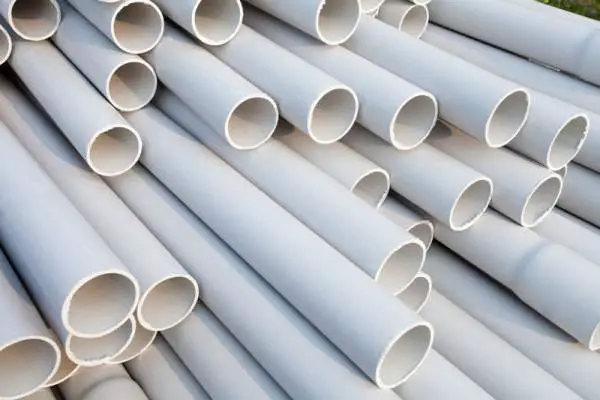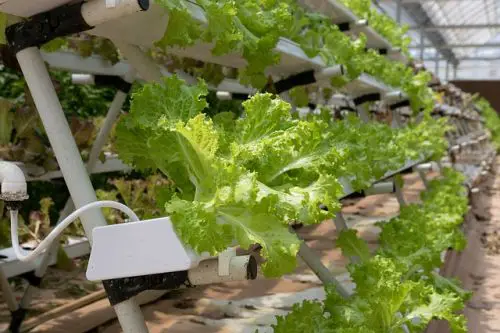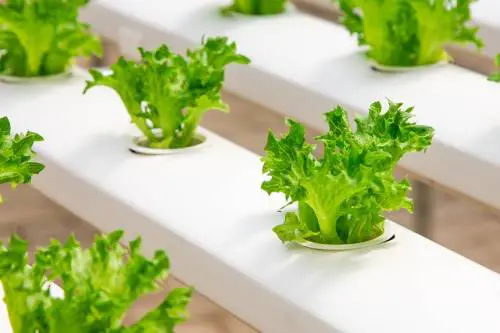More and more individuals are turning toward growing their foods. Since the limited amount of space some people have, they seek alternative and inventive ways to grow vegetables. With this, came the advent of hydroponics and also a fork of this we know as aquaponics.
Many of these systems will be based around piping and tubing to transfer water. It is possible to purchase made-for-purpose pipes and tubes, yet the DIY nature of many system builders is they turn toward PVC pipes and tubes. You find these components are readily available and highly affordable. However, it does lead to one question.
Is PVC safe for Aquaponics and Hydroponics? There are various standards of PVC, and some are not suitable for either hydroponics or aquaponics. However, there are standards that can deem some PVC as food safe. Before you build your system, it is good to understand the types of PV and the concerns some individuals have.
What Are the Types of PVC?
Here is an overview of the various strains of PVC.
Plain PVC
You will find this in two forms. You have one which is an unplasticized polymer (uPVC) and a flexible plastic.
In the unplasticized form (uPVC), the PVC is rigid and stiff; you will find these two traits make this PVC highly durable when you compare this to your regular PVC which is much softer, pliable and flexible, and also not as durable.
CPVC
CPVC is a chlorinated type of PVC that offers some unique properties. It provides high glass transition temperature, chemical inertness, and high heat distortion temperatures. You often find this in use for mechanical, smoke-related scenarios and dielectric. From the name, you can see it contains a higher degree of chlorine than regular PVC.
PVC-M
This variant of PVC is incredibly tough and possesses vast amounts of impact strength.
PVC-O
Out of all, PVC-O is the strongest and offers very high tensile strength. It is often used in applications where this strength will be a benefit.
Are PVC Pipes Toxic?
The main types of PVC you may use for your systems will be PVC or uPVC, and it is here where the concerns lie.
Instead of thinking, PVC is flexible, while uPVC is rigid. You will find more to it because there are reasons this occurs. When there are no plasticizers added, you end up with a rigid product, and thus it takes on the term of Foods Safe PVC.
Food Safe PVC doesn’t have any Bisphenol A (BPA) or Phthalates, and the lack of these makes it safe for use in gardening, regardless of the type. If you are unsure, what you need to be aware of is any mark or stamp that shows the PVC is to NSF-51 rating, and thus, safe for food production.
NSF or National Sanitation Foundation is the organization that does all the testing and sets the standards for public health and environmental safety.
Once your PVC has this NSF-51 rating, you know it meets all the set standards for ‘Plastic Material and Components used in Food Equipment.’
Why is Regular PVC Not Safe for Hydroponics?
While you can see standards that are in place and why uPVC is safe, you ought to understand why regular PVC isn’t food safe and shouldn’t be used in your Hydroponics or Aquaponics gardens.
PVC (Poly Vinyl Chloride) is a thermoplastic polymer they make from various chemicals, which can comprise of Phthalates, Lead, and Cadmium. You will find all of these are toxic to humans.
Besides the toxicity of these compounds, when you burn PVC, it gives off a dangerous chemical named Dioxin, which is a class 1 carcinogenic.
What makes things worse is you cannot recycle PVC pipe. When it faces exposure to sunlight for extended periods, it can pass lead ash through the pipe.
Because PVC has been around for a large number of years, there are landfills and gardens, which are full of PVC pipes breaking down under the force of the sun to create a health hazard to humans.
Even if you are using uPVC in your system and it has exposure to the sun in your hydroponic or aquaponic garden, it may be wise to cover these pipes in some reflective paint or cover. If nothing else, it can help to keep your hydroponic reservoir cooler, which is a good thing.
Gluing PVC Pipes in Hydroponic Systems
With the NSF-51 rating, and the NSF-61 rating determining your PVC pipes are food and water safe. Even if regular PVC is safe if it is out of sight, there is one area that you can find that isn’t typically mentioned.
When gardeners build their systems, they may need to glue certain connections. While it is preferable to leave them as a pressure fit, it isn’t always possible to do so.
The problem of over gluing comes into play. Much of the thought goes into the safety and toxicity of PVC, yet the chemical cement is highly toxic. You can obtain a good idea from the smell it gives off, and the feelings of dizziness or you find it hard to breathe if you are in an enclosed area.
PVC cement shouldn’t end up on the skin, and you should never inhale the fumes if possible. When used correctly, there isn’t too much of an issue; it dries quickly and takes you seconds to apply it.
The issue comes from applying too much glue, and when this happens, it can pass into the water. If this were to occur in a hydroponics system, you could clog your pump, yet in aquaponics, it could cause harm to your fish.
What are the Other Types of Plastics?
If you counted the types of plastics in production, you could reach numbers in the thousands. However, here is a handful you may be more familiar with. The FDA sets higher standards for any plastic that will come into contact with anything to do with food or beverages.
- PET or PETE: Polyethylene terephthalate falls as number 1 in the recycling triangle diagram. It is a clear, strong plastic you will see in use with plastic bottles of water, juice, soda, and peanut butter and spreads. You will find it comes in varying degrees of thickness.
- HDPE: High-density polyethylene sits in second place in the triangle as is often used for your milk and juice containers as well as some laundry products. You find this plastic thicker than PET and can be clear or colored.
- PVC: Polyvinyl chloride as we see is best left to what it was designed for, although it can be sued in food production. It is, however, essential to be sure it hasn’t been treated for use in industry.
- LDPE: Low-density polyethylene plastic is most typically seen in use as bags for frozen foods, bread bags and squeezy bottles.
- PP: Polypropylene is the one we may see quite often in yogurt or margarine containers and medicine bottles.
- PS: Polystyrene, is a foam, yet still a plastic. You’ll see PS in plastic plates, cups, cutlery, egg cartons, and meat trays depending on the grade it is made to.
- Other: Number 7 on the triangle code can be a mix of the above materials or resins not listed. Being food safe, you can find it in use for 5-gallon water bottles, citrus juice bottles, and others.
Conclusion
When building a system, or adding to it, if you choose your PVC safely and make sure it comes with an NSF-51 rating, then you shouldn’t have issues. Keep it out of the sun and try not to use glue, and you will be well on your way to healthy veggies without any worry.





